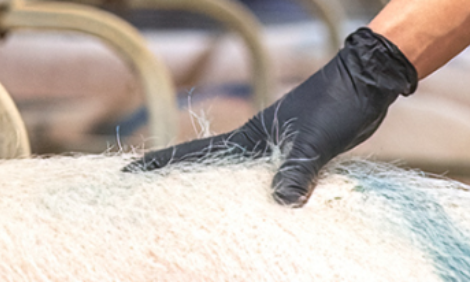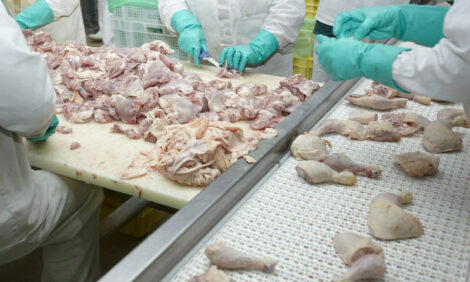



Interactions between <i>Salmonella Typhimurium</i> & intestinal epithelial cells
By Alpharma Animal Health - This trial looks at the effect of Alphamune G on in-vitro interactions between Salmonella Typhimurium and intestinal epithelial cells, showing positive results.
SUMMARY OF TRIAL SET UP:
Location:
Belgium
Timing of trial:
2003
Investigator:
Prof. Dr. L. Ducatelle and Ir. F. Van Immerseel, RUG, University of Ghent, Belgium
Purpose of evaluation:
Study the effects of contacts of Salmonella Typhimurium with AlphamuneTM G, D-Mannose and Bio-Mos* on in-vitro invasion of an intestinal epithelial cell line.
EXPERIMENTAL SET UP:
Intestinal epithelial cells were seeded in 96-well cell culture plates (Greiner, Fricken-hausen, Germany) at a density of 5.105 cells per ml culture medium (without antibiotics) and grown overnight.
Bacteria were grown for 20 hours in LB-medium. Then the bacteria were 1/50 diluted in LB-media, supplemented with D-Mannose, Bio-Mos* or AlphamuneTM G (at concentrations of 0.5 and 1%) and grown for 4 hours at 37°C.
The number of cfu/ml was determined by plating 6 x 20 ml of a dilution series of the suspensions on BGA, whereafter the plates were incubated overnight at 37°C. The suspensions were put at 4°C until they were used in the assay. The bacterial suspensions were diluted to a density of 5.106 cfu/ml. From these diluted suspensions, 200 ml was added to the cells.This was centrifuged for 10 min at 1500 rpm, whereafter the plates were incubated for 1 hour at 37°C and 5% CO2. Then cells were rinsed 3 times with Hanks’ Balanced Salt Solution (HBSS, Life Technologies, Paisley, Scotland), cell culture medium with gentamicin (50 mg/ml) was added and plates were incubated for 1 hour at 37°C and 5% CO2.
Hereafter, cells were rinsed 3 times with PBS and lysed with 1% Triton X-100 in distilled water (Sigma, St. Louis, USA). From this lysate, a 10-fold dilution series was made.
From each dilution, 6 x 20 ml was inoculated on BGA, to determine the number of cfu of S. Typhimurium per ml.
The tests were performed in triplicate with three repeats in each experiment.
Analysis of variance methods with the S-Plus software was used.
Equal concentrations of the different products were compared (with control), as well as different concentrations of the same products.
RESULTS OF AlphamuneTM G ON S. TYPHIMURIUM INVASIVENESS
Results are shown in hereunder figure, in which the mean of the three experiments (± standard error of the mean) is shown. Standard error of the mean is shown to indicate the probable interval in which the mean is lying.
On the vertical axis, the percent of invasion relative to the initial number of bacteria, brought on the cells, is shown.
On the horizontal axis, the different conditions, being the different contacts with the feed supplements added at various concentrations to the growth media, are shown.

Key observations:
For S. typhimurium, significant differences were detected between the Control group and the AlphamuneTM G Group at a concentration of 0,5 % (P < 0.05).
AlphamuneTM G when used at a low concentration of 0,5% had more numerical effects on reduction of invasiveness of S. Typhimurium in intestinal cellines than Bio-Moss and even more than D-Mannose at similar concentrations.
OVERALL CONCLUSIONS
S. Typhimurium, a zoonotic pathogen in swine shows a significant reduced level of invasiveness of intestinal cellines when placed in contact with AlphamuneTM G at 0,5%.
This in-vitro experiment demonstrates that AlphamuneTM G has pre-biotic effects against S. Typhimurium, very likely by its mannano-oligosaccharide content.
From these observations it could be concluded that AlphamuneTM G when supplemented in pig feeds could contribute to the reduction of invasiveness of S. Typhimurium in the swine intestinal mucosa.
AlphamuneTM G could be a valuable tool in the reduction of S. Typhimurium shedding of pigs.
Correct dosing of feed supplements is likely to be mandatory to get the right assumed pre-biotic effects.
* Trademark of Alltech.
Source: Alpharma Animal Health - September 2004






